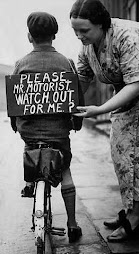Editorial: Sharing the road should get easier
Well, hallelujah.
Sometime this fall, the City of Memphis will move into the late 20th Century in terms of accommodating bicyclists.
That's when the city's first bike lanes are scheduled for completion. City Engineer Wain Gaskins said one bike lane will be on Shady Grove between Humphreys and Yates and the other on Brierview between Shady Grove and Walnut Grove.
It's a good first step, and long overdue.
But the city shouldn't stop there. There are plenty of roads throughout Memphis that are wide enough to accommodate bike lanes without any additional road construction work.
The city should be making plans to add bike lanes on as many of those roads as possible, as soon as possible.
Unless the city is using road paint flaked with gold, the cost involved should be fairly small.
And bike lanes could actually help save lives.
That alone should put bike lanes higher on the priority list than many of the other uses city government manages to find for taxpayer dollars.
As an added bonus, bike lanes would improve the overall quality of life in Memphis, which could help stem the city's steady population loss.
This is, after all, a time when rising gas prices are forcing many people to consider alternative modes of transportation, including bicycles.
Despite the obvious benefits of bike lanes, city officials have seemed somewhat reluctant to embrace them.
Gaskins has said he's concerned because many storm water grates around the city have grooves that run parallel to sidewalks. That poses a hazard to cyclists because bike tires can get caught in those grooves, leading to accidents.
As a result, Gaskins has said he wants to wait until bike-friendly grates are installed before creating more bike lanes.
His logic on that point seems disconnected.
Because cyclists are already facing one type of road hazard, he's unwilling to take a completely independent step to make the roads safer for them?
That's like punishing cyclists for daring to venture into unsafe road conditions.
The grates do need to be replaced, but that could take a while. An interim solution would be to paint the grates yellow or red to alert cyclists to the potential hazard.
No, bike lanes aren't going to prevent all of the possible problems that could arise between motorists and cyclists.
Some motorists are still going to behave rudely and even dangerously because they just don't want to share the road with anyone moving more slowly than they are.
And some bicyclists are still going to disobey the rules of the road, endangering themselves and others around them.
Lanes just mark where cars and bikes should go. That doesn't necessarily mean they'll be used properly.
Plus, it would be impractical to put bike lanes on every single stretch of asphalt inside the city limits.
If the city's leaders really wanted to be progressive, they would commit to building a network of bike paths that would allow people to travel from Point A to Point B while largely avoiding the roads cars use.
But now we're talking real money.
In the short term, bike lanes are a good common sense solution. We need more of them.










No comments:
Post a Comment